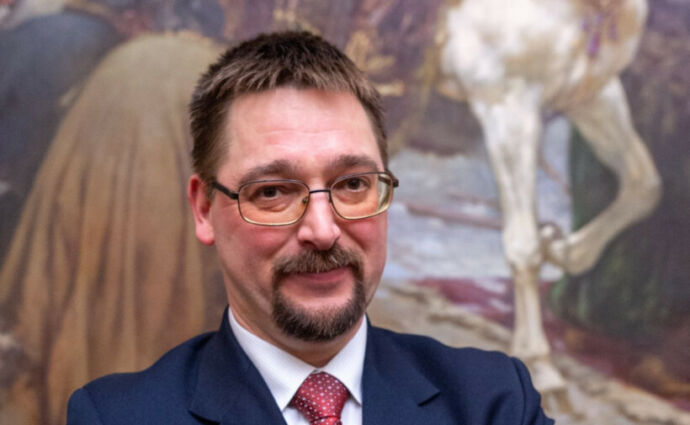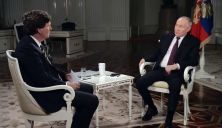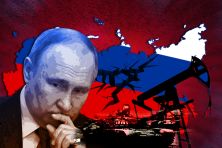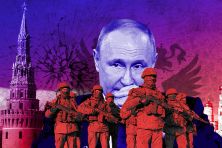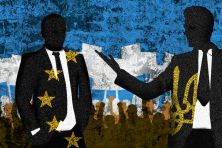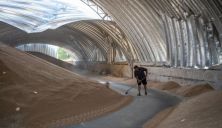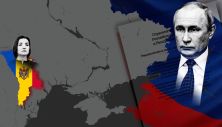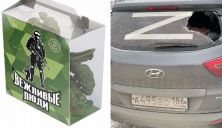Ukrainian literature, cinema and music, as well as demonstration of history through museum collections – this is exactly the kind of soft diplomacy that allows the world to learn the truth about Ukraine. This was discussed during the forum “Ukraine 30. Ukraine’s Image Abroad”, which took place in Kyiv on August 2-4.
Forum participants say: cultural diplomacy can become a part of political cooperation. And about half of 4,000 projects that were submitted this year to the Ukrainian Cultural Fund (UCF), aimed not only at the domestic market, but also at demonstration in other countries.
Vladyslav Berkovskyi, Executive Director of the Ukrainian Cultural Foundation, spoke in detail about the mechanisms of cultural diplomacy in Ukraine in the “Official Talk” program of the UA TV channel.
– First Lady of Ukraine Olena Zelenska said that culture is a large-scale platform for dialogue. What role do you think cultural diplomacy plays for Ukraine on the world stage?
– Regarding the representation of Ukraine, we can talk about different spheres: economy, business etc.
But in fact, we can move to a deep level of understanding of Ukraine only through one single direction – culture. There is no other tool to convey opinion from bottom to top. Any diplomacy is actually tied to culture, on the representation, on the one hand, of an opponent or partner, and on the other hand, on finding common ground.
There may be an option when we have economic points of contact, but no cultural points of contact, and any cooperation falls apart. Why? Opponents or partners do not hear each other. They exist in different coordinate systems. Ukrainian cultural diplomacy is so multifaceted. On the one hand, to bring the Ukrainian cultural segment to the coordinate system where the global world, Europe, lives. On the other hand, not to allow the Ukrainian segment to fade, not to allow it to assimilate, but on the contrary to integrate.
– What are the main steps the state has to make to implement this cultural diplomacy?
– The ways are different. Let’s start with the simple one: any event requires funding. If there is no finance, we can only focus on volunteer work or randomness.
Cultural diplomacy as part of public policy should receive appropriate funding. At present the main investor that allocate state money in specific cultural projects is the Ukrainian Cultural Fund. This is an organization that not only invests money into Ukrainian cultural product, presenting a positive image of Ukraine, branding Ukraine, promoting the Ukrainian idea, and lobbying Ukrainian interests outside of Ukraine. It is something beyond.
But this institution also invests money in order to form a single cultural space, a single paradigm, a single cultural meaning inside.
Another element, besides financial, is the presence of a creative industry, the presence of those people who form a cultural product. Those who are able to convey a cultural product, cultural intentions abroad.
– What do we have more today: creativity or money?
– There is always a lack of money. But another problem is that there is not enough creativity. Lack of opportunity and ability to convey Ukrainian culture, traditions, achievements of the European or world community.
That is, a significant part of the projects we work with, or finance, unfortunately, in their substantive, operational, technical parts, do not use all opportunities that both technological development and the world community provide today. And two important elements are not taken into account. The first element is what they want to hear from us. And what we want to show them.
– The historical heritage of Ukraine in the Russian-occupied Crimea and certain areas of Donetsk and Luhansk regions. We constantly hear that the historical monuments are being destroyed. How to be Ukraine?
– I will expand your question a little.
Our top politicians talk about our historical and cultural heritage in the occupied Crimea and parts of Donbas. But do not forget that a great amount of our heritage is located on the territory of Russian Federation. And we need to talk about this too.
This should be a unified approach. And I see several points. The first – in any case, do not forget about where it is. Constantly inform the world community that this is Ukrainian national cultural product.
What are the ways? The ways and mechanisms can be different. From the classic mechanism of digitalization, when we create digital projects in which we form and show this object as truly Ukrainian. On the other hand, the information space outside Ukraine is saturated with information that this object is Ukrainian.
The classic service is Wikipedia. I’m not saying – the Ukrainian-language segment of Wikipedia, I’m saying – the international segment (English, German, Spanish, I’m not talking about Russian, because there is a clear policy, and who forms it). For our part, we should also connect and form at the international level, at the level of Wikipedia, at the level of other resources, information that certain objects, phenomena, elements of the cultural segment are Ukrainian.
Unfortunately, we have a problem with this. There is a certain group of volunteers who are actively working, but a group is not a purposeful policy.
– What would you call the main historical heritage in Crimea and Donbas?
– Donbas is a truly Ukrainian territory, and it has always been. We can base both on scientific research and on archival, historical sources that need to be shown and presented.
The impression was that by the beginning of colonization the Donbas was a wild empty field, to which someone comes and forms something. No – it never happened. This territory has always been inhabited, and our task is to show continuity, to show objects of Ukrainian heritage. As for me, for example, a significant part of my family comes from Donbas, this is the outskirts of Sloviansk and the like. That is, to show that this territory has always been Ukrainian. Of course, there were Russified cities, but the villages (and this is a large part of the region) is truly Ukrainian.
We should talk about Crimea as an element of synergy and unification of several cultures. On the one hand, we have the Crimean culture, on the other, Ukrainian. By the way, we have little informational reasons to find out about how Crimea was rebuilt after World War II. And when we examine, for example, archival historical sources, it turns out that the Crimea was rebuilt by people from Kamianets-Podilsky region (now Khmelnytsky) Rivne, Vinnytsia, Zhytomyr etc.
And when you hear that this is a “primordially Russian territory”, I want to say: ” Where does your father come from?” Where is your mother from?” My father is from Kamyanets-Podilskyi, my mother is from Rivne. And how did it happen that you became a Russian when your parents, grandparents and great-grandparents are Ukrainians?
[We should go to] the specific cultural heritage sites that show everything. This is the landscape of the Crimea, and the Crimean historical monuments associated with the Crimean Tatars. For Donbas – the symbol of Donbas, in my opinion, is the Siversky Donets river, chalk mountains and others.

